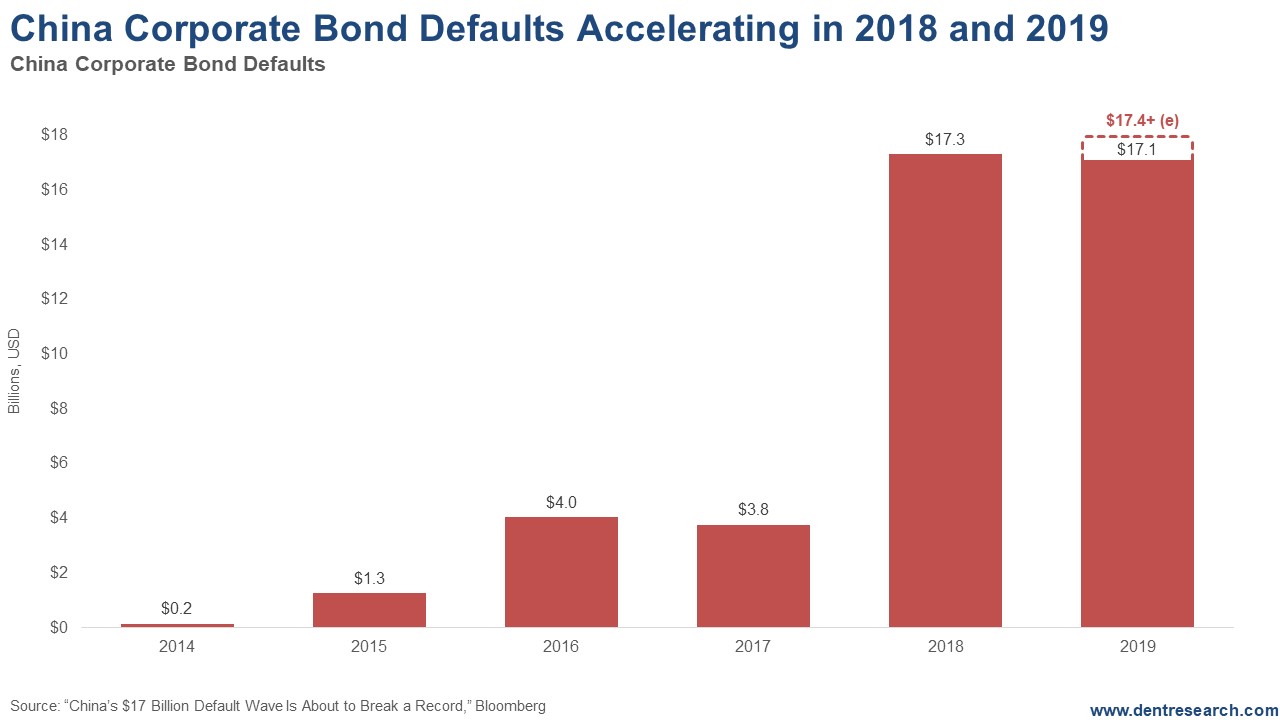The first global debt bubble came from 2001-08, rising from $77 tr (trillion) to $180 tr. Most of that was in the developed countries (DCs). The second bubble, based on easy money from DC QE policies to bail out their debt bubble, saw that global debt rise to $250 tr.
Most of that new $70 trillion was in the emerging countries, and most of that was in corporate debt… and most of that was in China.
Now emerging country corporate debt is the dominant sector at 96% of GDP at peak recently, and now closer to 92%. That’s almost as much as all three other sectors (government, financial and consumer) combined. It was only 62% in 2007 – and debt quality is lower in these countries.
But here’s the whopper: China’s corporate debt leads the world and is crushingly high for an emerging country, at 163% GDP, and that is a bit more than half all of its combined three other sectors. And worse, it has the highest short-term component of that debt, which is more subject to default at 77%!
The secret to China’s not so alarming government debt is that they implicitly guarantee local development projects that they push, so that’s where the debt is. And China’s corporate and total debt are roughly double that of most emerging countries – with lots of empty buildings and factories to show for it.
In the September Boom & Bust, I showed that emerging market corporate debt was likely to be the trigger for the next global financial crisis, which will be greater than the last one now after we didn’t deleverage, and added more debt in the riskiest areas of the world.
So, where would the worst defaults likely occur? China, of course. They and their unprecedented debt and real estate bubble is the epicenter of the next and final global financial crisis.
And they are starting an accelerating default cycle, just like subprime loans did in 2006 forward. Oh, they were just 14% of mortgages and 10% of consumer debt – so containable, Bernanke said.
No, they were just the trigger for a global debt crisis to wake up delusional investors in “Lala bubble land”…

This is how it starts. Note the small step up in 2016 to $4.0 tr from $1.3 tr. Now the bigger step up to $17.3 tr in 2018 with 2019 set to break that record by year-end at $17.4+ tr. I would expect bigger steps up in 2020 and 2021, and then more and more.
Other emerging countries like Venezuela and Argentina have already blown. Turkey could be next.
When China blows the whole thing blows, starting with corporate debt. Then spreading to the biggest real estate bubble wherein consumers have 89% ownership and 75% of their net worth in real estate… it’s 62% and 25%, respectively, in the U.S. and they are much poorer per capita.
When China’s real estate bubble blows, all real estate bubbles blow…
Let’s see central banks in the DCs try to stop that with money printing!
